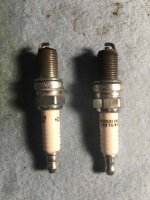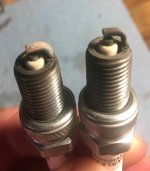As long as you're using a plug "close" to the stock one, heat range is not a problem. MOST people don't REALLY understand what plug heat range IS, but changing plug heat range is not going to make your bike pre-ignite or ping. Heat range is more about fouling plugs that anything else. On a "hotter" plug the electrode sticks out more, and will absorb more heat from combustion, thereby making it harder to foul. Nothing to do with the temp or strength of the spark.
A faulty MAP sensor can make your bike ping.
"PING" is usually too much timing.
A faulty MAP sensor can make your bike ping.
"PING" is usually too much timing.






